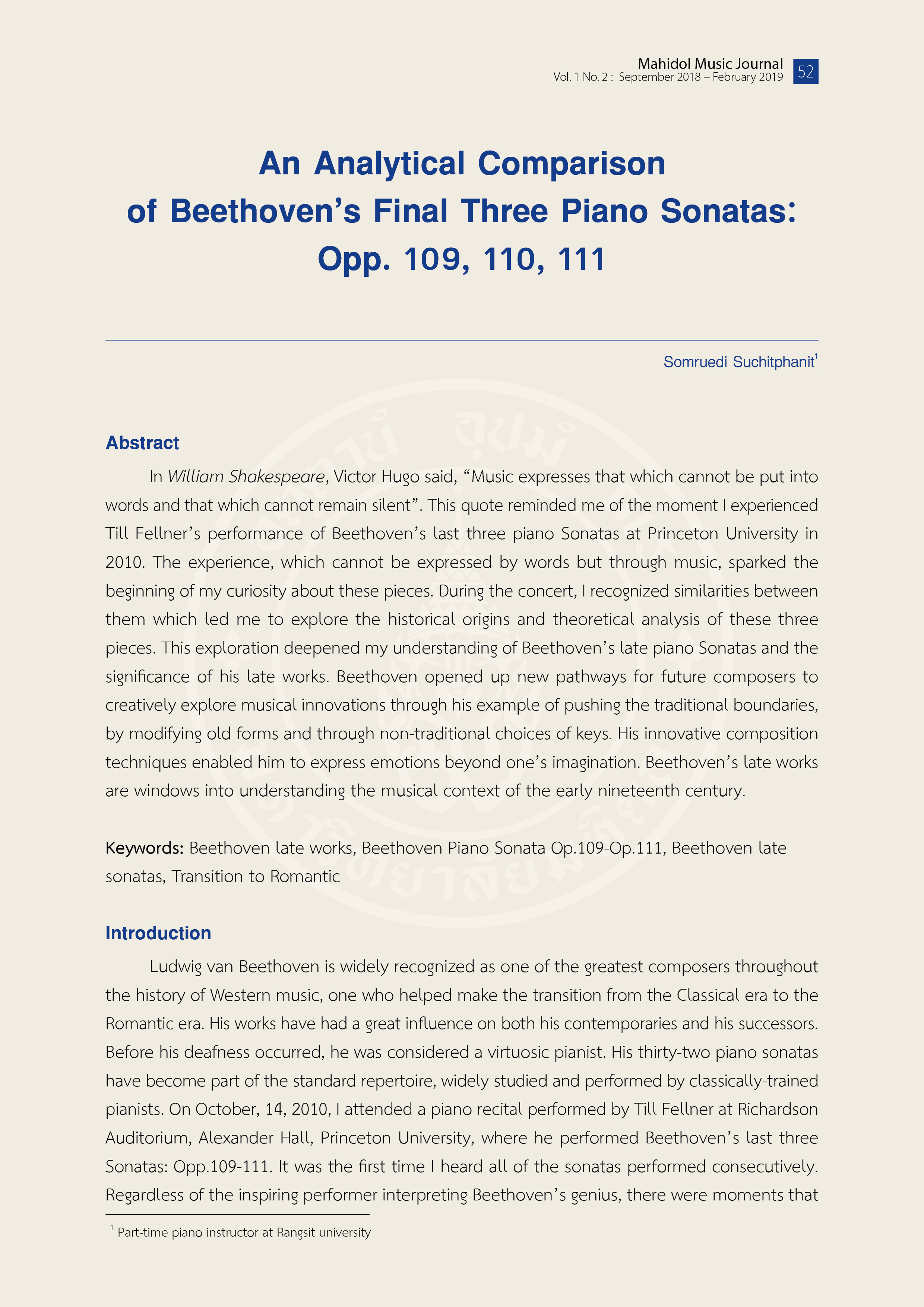An Analytical Comparison of Beethoven’s Final Three Piano Sonatas: Opp. 109, 110, 111
Keywords:
Beethoven late works, Beethoven Piano Sonata Op.109-Op.111, Beethoven late sonatas, Transition to RomanticAbstract
In William Shakespeare, Victor Hugo said, "Music expresses that which cannot be put into words and that which cannot remain silent". This quote reminded me of the moment I experienced Till Fellner’s performance of Beethoven's last three piano Sonatas at Princeton University in 2010. The experience, which cannot be expressed by words but through music, sparked the beginning of my curiosity about these pieces. During the concert, I recognized similarities between them which led me to explore the historical origins and theoretical analysis of these three pieces. This exploration deepened my understanding of Beethoven's late piano Sonatas and the significance of his late works. Beethoven opened up new pathways for future composers to creatively explore musical innovations through his example of pushing the traditional boundaries, by modifying old forms and through non-traditional choices of keys. His innovative composition techniques enabled him to express emotions beyond one’s imagination. Beethoven’s late works are windows into understanding the musical context of the early nineteenth century.

Downloads
Published
How to Cite
Issue
Section
License
The copyright of the article belongs to the author. Published articles represent the views of the authors. The editorial team neither necessarily agree with nor take any responsibility for the article.


